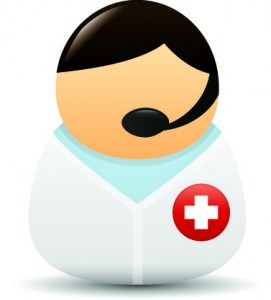Healthcare with Confidence
Herniated cervical disc is a pathology of the cervical vertebrae where it seeps through the inner core of the damaged portion of the outer part of the disc and puts pressure on the nerve roots of the spine and on the spinal canal, that causes a narrowing of the latter (stenosis).
Herniation of the cervical spine develops usually in 30-50 years people. One of the most common symptoms is a pain in the hand. Although a herniated disc neck may occur due to injury of the cervical spine the symptoms usually begin spontaneously.
Bulging of the disc herniation puts pressure on the cervical nerve causing pain that radiates down the arm. Along with the pain can also occur numbness and tingling in the hand and fingertips. There may be muscle weakness. For many people, the symptoms are different.
Herniation of the cervical spine is most common at the levels of C5 – C6 (cervical vertebrae 5 and 6), and C6-C7. The next most common place is the C4 – C5 level, and rarely the C7 – the level of T1 (thoracic).
As between the bodies of the cervical vertebrae are not many contents discs usually not very large in size. The space in which the nerves are located is not large, therefore even a small herniated disc may impinge on the nerve and cause severe pain.
Diagnostic herniation cervical disc
After an initial examination by a doctor will need a special procedure Imaging:
MRI scan (magnetic resonance imaging) is one of the best tests for the diagnosis of a herniated disc is to scan. MRI gives the doctor an image of any nerve cervical spine.
CT myelogram may also be applied to identify the cervical herniated disc. During this procedure, the spinal canal is entered contrast medium for clear visualization of discs of the spine.
Sometimes the doctor may require EMG (electromyography). This electrical test, which is done by stimulating specific nerves and inserting needles into various muscles of the arms or legs, postradayshih pinch nerve. If the muscles have lost their normal innervation, electrical activity is spontaneous. EMG can also help to exclude other nerve entrapment that can cause pain in the hand. For example, carpal tunnel syndrome, shoulder plexitis, pinched ulnar nerve, or thoracic outlet syndrome.
Treatment
Pain caused by herniated cervical intervertebral disc, usually the result of combining pinch the nerve roots and inflammation of the disk material. At first doctors considered treatment anti-inflammatory drugs (NSAIDs) or COX-2 inhibitors, which help to relieve pain.
Therefore, taking anti-inflammatory drugs can reduce the pain of inflammation at the time, which requires a doctor to resolve the issue with the pressure and pinching of the nerve roots.
In addition to anti-inflammatory drugs, in Israel there are a number of non-surgical treatments that can help ease the pain from the pressure of a herniated disc. This methods such as physical therapy and exercise, chiropractic, osteopathic medicine, lifestyle changes and activity of the patient wearing a neck collar to ensure the position of rest of the cervical spine, medication, epidural injections.
Surgery of cervical intervertebral disc herniation
If the pain lasts longer than 6 – 12 weeks or it is severe, physician may recommend a surgery.
Surgical procedures on the cervical spine are very reliable in Israel, performed with minimally invasive and do not entail strong postoperative pain and adverse effects. These operations are performed by experienced surgeons. The success rate cervical spine surgery is about 95 – 98%, in terms of pain relief in your hands.
Surgery methods
nterior cervical discectomy and spine fusion. This is by far the most common method for the treatment of herniated discs of the cervical. In this operation, the disc is removed through a small incision (3cm) at the front of the neck. After removing the disc, its space converges. In some cases, additional stability and more successful convergence of the disc can be mounted graft.
Front discectomy without fusion. This is basically the same procedure as the previous but without the use of bone graft.
Posterior cervical discectomy. This method is on the rear side of the neck (from the back) in the lateral direction in the nerve openings (“tunnel” through which the nerve in the direction of the spinal canal). Nevertheless, it is technically more complicated than anterior approach because of the large amount of veins in this area.
Leading Israeli Spine Surgeons – Second Opinion



